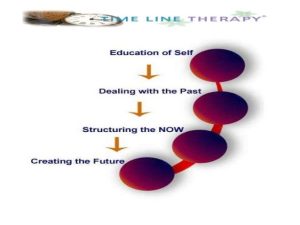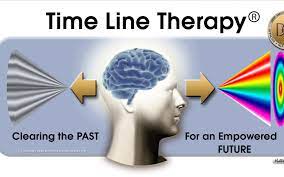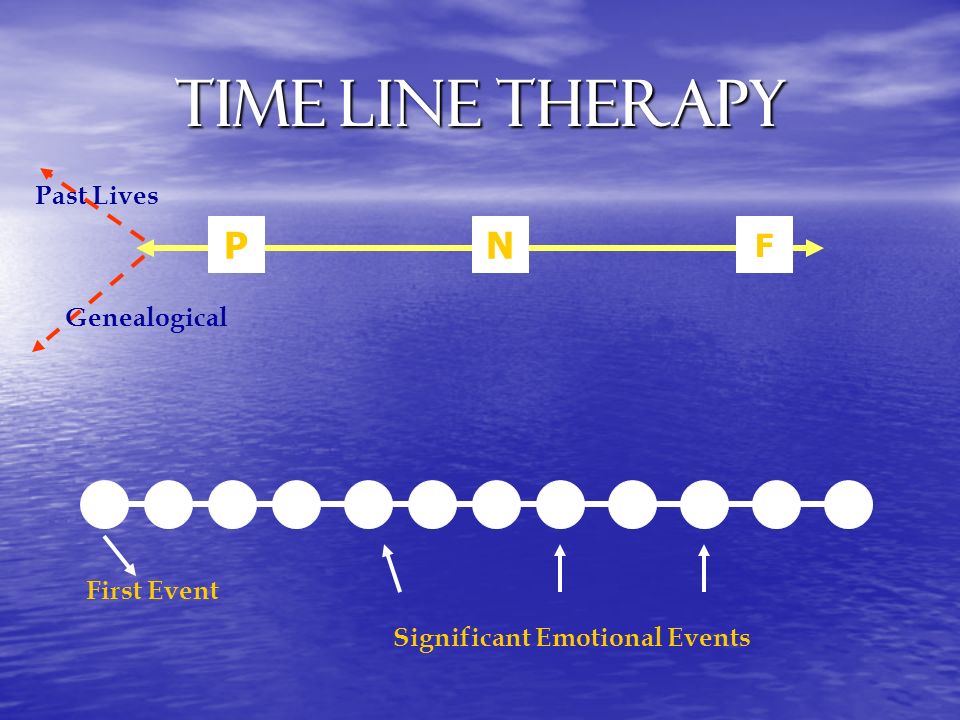Timeline therapy is a therapeutic technique that helps individuals to understand and change the patterns of their past. By revisiting past events and exploring how they have affected present behavior, individuals can work to create a more positive future. Timeline therapy is based on the idea that our memories are not static, but rather evolve over time. This means that we can change the way we remember past events. And in doing so, change the way we feel about them.
Contents
- 1 What Is Timeline Therapy?
- 2 How Does Timeline Therapy Work?
- 3 Benefits Of Timeline Therapy
- 4 Timeline Therapy in the Workplace
- 5 Timeline Therapy as an Intervention Strategy
- 6 Limitations Of Timeline Therapy
- 7 Skills Taught In Timeline Therapy
- 8 Goal Of Timeline Therapy
- 9 Methods Of Timeline Therapy
- 10 Efficacy
- 11 Conclusion
- 12 A Word From Therapy Mantra
What Is Timeline Therapy?
 Timeline therapy is a therapeutic technique that helps individuals to understand and change the patterns of their past. By revisiting past events and exploring how they have affected present behavior, individuals can work to create a more positive future. Timeline therapy is based on the idea that our memories are not static. But rather evolve over time. This means that we can change the way we remember past events, and in doing so, change the way we feel about them.
Timeline therapy is a therapeutic technique that helps individuals to understand and change the patterns of their past. By revisiting past events and exploring how they have affected present behavior, individuals can work to create a more positive future. Timeline therapy is based on the idea that our memories are not static. But rather evolve over time. This means that we can change the way we remember past events, and in doing so, change the way we feel about them.
Some of the benefits of timeline therapy over traditional psychotherapy include-
- Increased effectiveness
- Efficiency
- Cost-effectiveness
- Ease of use
Additionally, because timeline therapy is based on the idea that our memories are not static, it has been shown to be more effective than traditional therapies in the long term.
However, timeline therapy does have limitations that require additional interventions to be successful (e.g., medication).
How Does Timeline Therapy Work?

Timeline therapy is based on the idea that our memories are not static, but rather evolve over time. This means that we can change the way we remember past events, and in doing so, change the way we feel about them.
- First, the client is guided through the creation of a timeline. This timeline starts with the present-day and leads back to infancy or childhood. The client can use physical objects, drawings, photos, or memories to represent significant events throughout his/her life.
- Next, the client explores how each event on his/her timeline affected him/her at the time of the event and how those events continue to influence him/her today. By doing this, clients learn that it is possible to change the way they feel about past events by changing their memories of them.
- In addition, clients are taught skills for creating a more positive future on a new timeline going forward from the present day. They focus on what they want to happen rather than what they do not want to happen.
Benefits Of Timeline Therapy
 Timeline therapy is a therapeutic technique that helps individuals understand how past events have influenced them in the present. By doing this, clients can work to change the way they feel about past events and improve their mental health. In addition, timeline therapy teaches skills for creating a more positive future on a new timeline. This can be beneficial for returning to work for individuals with mental health disorders. The benefits of timeline therapy include:
Timeline therapy is a therapeutic technique that helps individuals understand how past events have influenced them in the present. By doing this, clients can work to change the way they feel about past events and improve their mental health. In addition, timeline therapy teaches skills for creating a more positive future on a new timeline. This can be beneficial for returning to work for individuals with mental health disorders. The benefits of timeline therapy include:
- Improved self-awareness
- Strategies for creating a more positive future
- Ability to change the way you feel about past events
- Improved mental health
- Return to work
- Can be beneficial when working with individuals with mental illness
- Allows you to create a more positive future on a new timeline
One of the main benefits of timeline therapy is that it can be beneficial when working with individuals diagnosed with mental illness. In addition, the therapy can help you create a more positive future on a new timeline. It allows you to understand how past events have influenced you in the present by placing them on a timeline and explaining what they were at the time. Then, it allows you to make decisions about how past events have made you feel now. And how you would like for your future. Next, it allows you to make a positive timeline of what you would like for your future and can help return you to work if that is an option.
Timeline Therapy in the Workplace

Returning individuals back to work can be difficult for employers, especially when considering workers with mental health disorders. Mental health conditions are associated with high rates of absenteeism and low productivity, placing huge financial burdens on employers (Gattuso, Nelson, & Roehling, 2010).
Fortunately, there are a number of strategies that employers can use to help individuals with mental health disorders return to work. One such strategy is timeline therapy. Using this technique, workers develop timelines of significant events in their life and how those events have affected them today. By doing so, clients learn that it is possible to change the way they feel about past events by changing their memories, and in turn, improving the way they feel about work.
Moreover, clients can learn skills for creating a more positive future going forward from the present day that focuses on what they want to happen rather than what they do not want to happen. In doing so, returning to work becomes a more appealing and achievable goal for individuals with mental health disorders (Gattuso, Nelson, & Roehling, 2010).
Timeline Therapy as an Intervention Strategy
Individuals diagnosed with mental health disorders such as depression may benefit from timeline therapy. This is especially true if those clients are having trouble accepting their diagnosis or are unsure about taking medication to treat their condition.
By promoting self-awareness and providing strategies for creating a positive change in the future, timeline therapy proves more effective than traditional psychotherapy. One study showed that this technique was especially helpful for those individuals whose mental health symptoms were most severe.
Though the research is promising, this therapy does have limitations. For example, it can be difficult to track all significant events related to an individual’s mental health symptoms. Also, timeline therapy alone may not provide enough support for clients whose symptoms are too severe.
However, for those individuals who are able to create a timeline of their life and identify ways to manage mental health symptoms going forward, timeline therapy could be beneficial. Employers should consider using this as an intervention strategy for workers diagnosed with mental health issues because it can help return them to work, which benefits both the employees and their employers.
Limitations Of Timeline Therapy
Though research has shown that timeline therapy can be beneficial for individuals diagnosed with depression, it also has limitations. For example, it may be difficult to track all significant events related to an individual’s mental health symptoms and provide support for those who have too severe of symptoms.
- Difficult to track all significant events related to an individual’s mental health symptoms
- Does not provide enough support for those with too severe of symptoms
- Not effective when used alone
The main limitation of timeline therapy is that it can be difficult to track all significant events related to an individual’s mental health symptoms. It may also be difficult for some clients to experience success when timeline therapy is used alone. For example, clients who have too severe mental health symptoms may not be able to create a new future timeline on their own.
When using timeline therapy on its own, individuals may not experience success. Because they do not believe that they can change their future. Therefore, employers should consider using this as an intervention strategy for workers diagnosed with mental health disorders.
Skills Taught In Timeline Therapy

Timeline Therapy is a therapeutic technique that helps individuals understand how past events have influenced them in the present. By doing this, clients can work to change the way they feel about past events and improve their mental health.
- Being aware of what was happening around you
- Seeing the positive in events that were once thought to be negative
- Making decisions about how past events have made you feel now and what you would like for your future
- Putting events on a timeline to explain when certain events happened
- Making a positive timeline for the future that you would like to happen as opposed to a negative one
In addition, timeline therapy teaches skills for creating a more positive future on a new timeline. Employers should consider using this as an intervention strategy for workers diagnosed with mental health issues. Because it can help return them to work, which benefits both the employees and their employers.
Goal Of Timeline Therapy
The goal of timeline therapy is to help individuals understand how past events have influenced them in the present. This can be beneficial for returning to work for individuals with mental health disorders. In addition, timeline therapy teaches skills for creating a more positive future on a new timeline.
The main goal of timeline therapy is to help individuals understand how past events have influenced them in the present. This can be beneficial for returning to work for individuals with mental health disorders. In addition, timeline therapy teaches skills for creating a more positive future on a new timeline.
Methods Of Timeline Therapy

There are a few different methods of timeline therapy that can be used, depending on the needs of the client. Some of the most common methods include:
- Putting events on a timeline
- Seeing the positive in events that were once thought to be negative
- Making decisions about how past events have made you feel now and what you would like for your future
- Making a positive timeline for the future that you would like to happen as opposed to a negative one
Each of these methods can be helpful in understanding how past events have influenced you in the present. In addition, they can help you create a more positive future on a new timeline.
Efficacy
Research shows that timeline therapy is an effective intervention strategy for individuals diagnosed with depression. In addition, it can be helpful in teaching them skills to improve their mental health and return to work. However, it may not be beneficial when used alone because some clients have too much difficulty experiencing success when using this method. Therefore, employers should consider using this as an intervention strategy for workers diagnosed with mental health disorders. It can be more beneficial when used in combination with other therapy types
When timeline therapy is used in combination with other therapies, it can be beneficial. For example, employers could use timeline therapy with cognitive restructuring or other types of therapies to help their workers better create a positive future for themselves on a new timeline.
Conclusion
Timeline therapy is a relatively new form of psychotherapy that can be used to help people overcome traumatic events from their past. This type of therapy uses visualization and relaxation techniques to help people create a new timeline for their life in which the traumatic event no longer has power over them. While more research is needed on the effectiveness of this approach, early studies suggest that it may be helpful for some people. If you are interested in trying timeline therapy, please consult with a qualified therapist.
A Word From Therapy Mantra
Your mental health — Your psychological, emotional, and social well-being — has an impact on every aspect of your life. Positive mental health essentially allows you to effectively deal with life’s everyday challenges.
At TherapyMantra, we have a team of therapists who provide affordable online therapy to assist you with issues such as depression, anxiety, stress, workplace Issues, addiction, relationship, OCD, LGBTQ, and PTSD. You can book a free therapy or download our free Android or iOS app.


